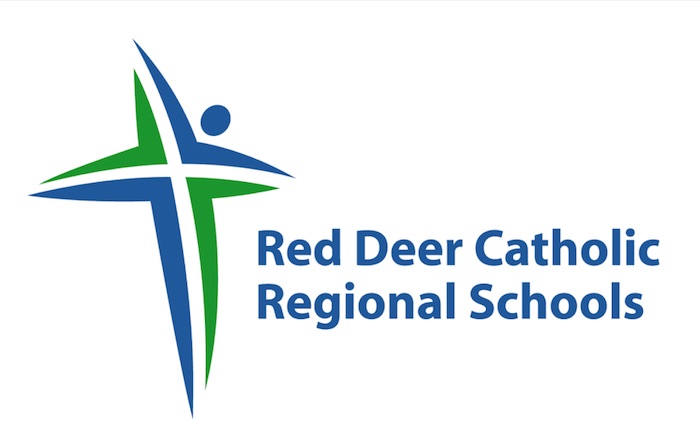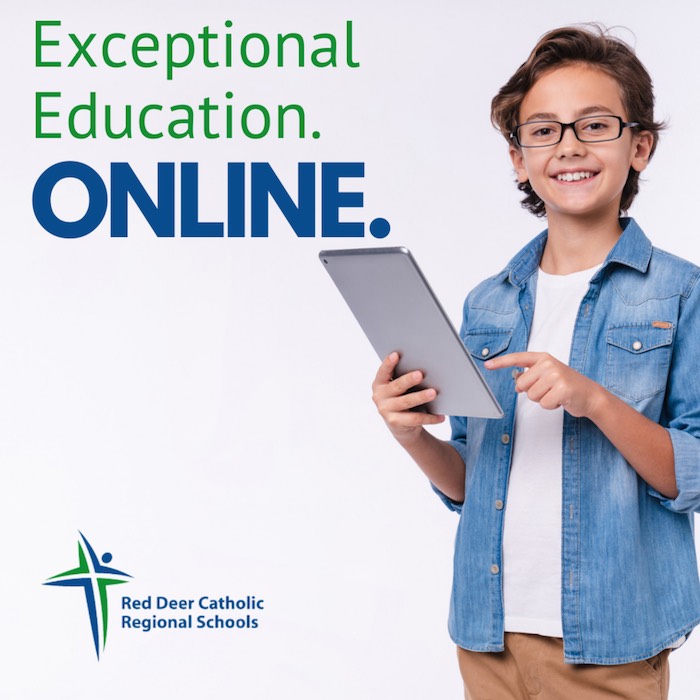To access our Virtual Open House on May 3rd at 7:00 p.m., please click the underlined text below:
M̲i̲d̲d̲l̲e̲ ̲S̲c̲h̲o̲o̲l̲ ̲V̲i̲r̲t̲u̲a̲l̲ ̲O̲p̲e̲n̲ ̲H̲o̲u̲s̲e̲
(link will become active on May 3 prior to the event)
___________________________________________________________________________________________
Middle School Online Learning Program Information:
Please note this program is different from the At Home Learning Program that was part of the COVID -19 Pandemic Response.
Online learning provides a high level of customization, allowing learning to be adapted with individualized learning pathways. Online learning further provides an ability to access quality learning activities and content in a flexible timetable and format. Finally research indicates that online learning increases motivation for students allowing them to work at a pace that matches their learning needs.
RDCRS recognizes that students who are elite athletes, performers, students who suffer from chronic illness, students and families who choose this as an effective way to meet their learning needs may look to select online learning.
Registration:
To participate in the Online Learning Program, students will need to enroll at St. Thomas Aquinas Middle School by clicking here.
This is a program of choice within Red Deer Catholic Regional Schools. All program offerings will be contingent on numbers. If a course or grade does not have significant enrollment it may not be available.
Transportation
Given this is a program of choice, we will work to continue to provide bussing for out of catchment students within the City of Red Deer Schools Boundaries (this would include rural students bussed into Red Deer Schools). No transportation will be provided for students who live outside of Red Deer Schools Boundaries (Eg. Blackfalds, Sylvan Lake, Innisfail). Transportation fees for bussing will be determined based on the school of choice guidelines as outlined on our transportation webpage. https://www.rdcrs.ca/transportation/eligibility-for-school-bus-service
What will the program look like?
Students are able to fully enroll in online classes or select a blended format where some courses are online and others traditionally to formulate a personalized timetable to best meet their learning needs.
Blended Learning Examples
Example #1
Jenny (Grade 8) is a competitive dancer and usually has practice at 2:00 pm 3 days a week where she usually has to miss class. She wants to take most classes in-person but needs the flexibility to accommodate her schedule.
Enrolled in class 8-4 (Blended)
Social 8 is scheduled online every afternoon from 2-3pm. If the student does not have practice she attends a work space to work on her online course. If she does have practice she can access her course at any time and ensure she is completing work as required.
Example #2
Thomas (Grade 9) is an elite hockey player and has practice and games regularly that impact his school schedule. Thomas is an academic and independent student, who excels in Math and ELA. He has chosen to take Math and ELA online, reducing his course load at the school, and offering him more flexibility to complete his work efficiently.
Fully Online
Example #1
Christina (Grade 7) is immunocompromised and has struggled with illness throughout her academic career. Christina is enrolled in a fully online program where all of her courses are online. She is able to connect and engage with her teachers and peers virtually, and also has the option to meet her teachers in-person during scheduled times.
Program Delivery
| What is Synchronous Learning?
Synchronous learning is the kind of learning that happens in real time. This means that you, your classmates, and your teacher interact in a specific virtual place, through a specific online medium, at a specific time. In other words, it’s not exactly anywhere, anyhow, anytime. Methods of synchronous online learning include video conferencing, teleconferencing, live chatting, and live-streaming lessons. |
What is Asynchronous Learning?
Asynchronous learning happens on your schedule. While your teacher will provide learning activities and assignments for completion, and evaluation, you have the ability to access and satisfy these requirements within a flexible time frame. Methods of asynchronous online learning include self-guided lesson modules, streaming video content, virtual libraries, posted lecture notes, and exchanges across discussion boards or social media platforms. |
A Gradual Spectrum of Synchronicity Based on Student Learning Needs
RDCRS believes that like any skill, online learning requires increased support and guidance in early exposure to this program and over time as students gain experience, confidence and success, more independence can be afforded to students. Recognizing that high school aged students in grade 11 and 12 often require online learning for increased flexibility in their schedule due to high level activities, work, outside commitments, the online program in middle school will be developed to help students gain the online learning skills they require to facilitate a more Asynchronous learning environment.
Schedule:
- Class work is rolled out on a week-by-week basis, with due dates for assignments on Fridays.
- New information for the upcoming week will be posted each Monday morning and due dates will be Friday.
- Teachers will be expected to provide 3 – 4 in Grade 6/7 and 2 -3 in grade 8/9 synchronous activities per week. Students should make every effort to participate in the synchronous activities outlined by the teacher. Any instruction done via video will be recorded and posted for students to access via Schoology, so students can access it at any time and multiple times if necessary.
- Students can also seek help via email, phone call, or video conference.
- In addition to instruction, staff will have designated times available as online office hours. This is a time students can connect with them via email, video chat or phone call in real time and receive a prompt response. Staff will communicate these hours to students via Schoology. Outside of these hours, staff will focus on one on one support, developing online activities and lessons, providing formative feedback to students and virtual appointments for student support. Communication outside of online office hours will be responded to but it may take longer. If a student cannot connect via the online office hours on a given day, they can email their teacher to arrange for another time.
- School hours are from 9:00 a.m. – 3:30 p.m. each day so note that communication in the evening may not be responded to until the next day. The online Learning Program will also continue to observe holidays and weekends.
Platform:
- Schoology is our primary platform.
- Staff may employ other digital media or software but equal access to all students, as well as instruction for use will be provided.
Assessment:
The primary purpose for assessment will is to:
- Communicate learning progress to students and parents.
- Identify which students did or did not master specific essential standards and subsequently develop strategies to help students improve their mastery of the learning outcomes.
- Identify the instructional practices that did or did not improve learning and plan for re-engagement.
- Determine how students will use results to understand their progress toward meeting essential standards.
| Formative Assessment
Ongoing assessment that allows teachers to monitor students on a day-to-day basis and modify their instruction based on what the students need to be successful. This assessment provides students with the specific feedback that they need to make adjustments to their learning. No grades are provided via formative assessment, rather the student receives feedback via comments, recorded video, or conferencing. |
Summative Assessment
Is a snapshot in time that lets the teacher, students and their parents know how well each student has completed the learning tasks and activities. It provides information about student achievement. Grades are assigned for assignments used for formative assessment. Students may have the opportunities to resubmit work to demonstrate mastery of the learner outcome if they choose. |

